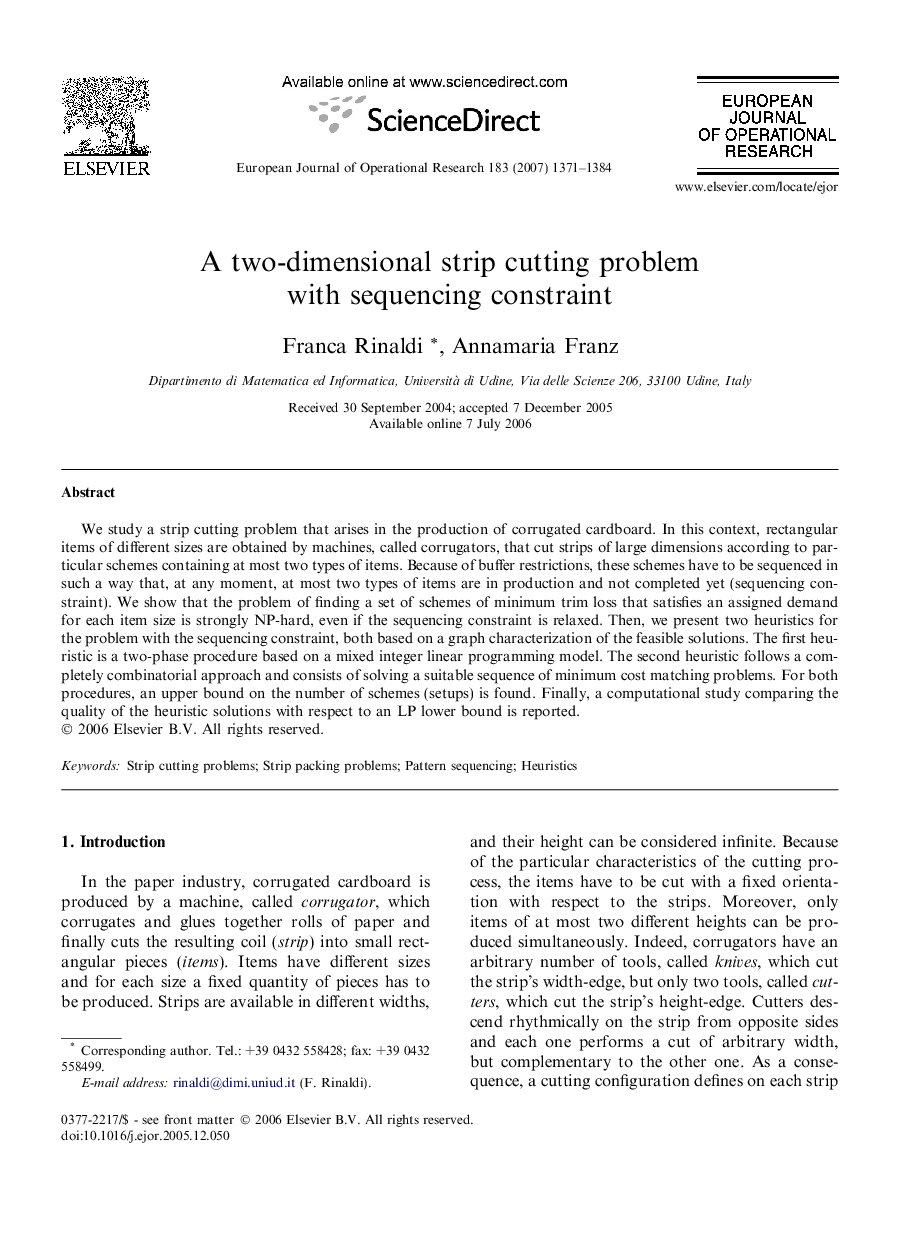| Article ID | Journal | Published Year | Pages | File Type |
|---|---|---|---|---|
| 481821 | European Journal of Operational Research | 2007 | 14 Pages |
We study a strip cutting problem that arises in the production of corrugated cardboard. In this context, rectangular items of different sizes are obtained by machines, called corrugators, that cut strips of large dimensions according to particular schemes containing at most two types of items. Because of buffer restrictions, these schemes have to be sequenced in such a way that, at any moment, at most two types of items are in production and not completed yet (sequencing constraint). We show that the problem of finding a set of schemes of minimum trim loss that satisfies an assigned demand for each item size is strongly NP-hard, even if the sequencing constraint is relaxed. Then, we present two heuristics for the problem with the sequencing constraint, both based on a graph characterization of the feasible solutions. The first heuristic is a two-phase procedure based on a mixed integer linear programming model. The second heuristic follows a completely combinatorial approach and consists of solving a suitable sequence of minimum cost matching problems. For both procedures, an upper bound on the number of schemes (setups) is found. Finally, a computational study comparing the quality of the heuristic solutions with respect to an LP lower bound is reported.
